1.
2.
3.
4.
5.
6.
7.
8.
9.
10.
At one time, utility tariffs were low, and none of the consumers thought about installing meters for water and heat. Now the rates have risen so much that a significant part of the family budget is spent on their payment. A particularly large amount in the receipt is the payment for heating. Therefore, property owners, trying to save money, decide to install heat, gas and water meters. The fact is that payment for the supplied services is charged by public utilities in accordance with approved standards, and not upon consumption.
Why do you need a heat meter?
Of course, it is beneficial to install a heat consumption meter, since the monthly amount for heating will be calculated according to the current tariffs and based on the readings taken from the individual meter. Thus, a consumer who has installed a heat energy meter pays only for the services received without the additions of utility companies that supply heat (read also: ""). In addition, the owners have the opportunity to regulate the temperature of heating rooms or utility rooms manually or automatically (subject to the installation of an electronic control system).Consumers should be aware that a heat meter does not save it, it allows you to pay for the actual energy consumed, and not according to approximate calculations obtained as a result of the theoretical development of state standards. Individual heat meters, such as in the photo, allow you to save a significant amount of money on paying for heat supply services, it can be up to 60%.
Types of modern heat meters
Commercially available heat meters for heating in an apartment are not one device, but a set of devices.The set may include:
- sensors;
- calculators for the amount of consumed thermal energy;
- flow, pressure and resistance transducers.
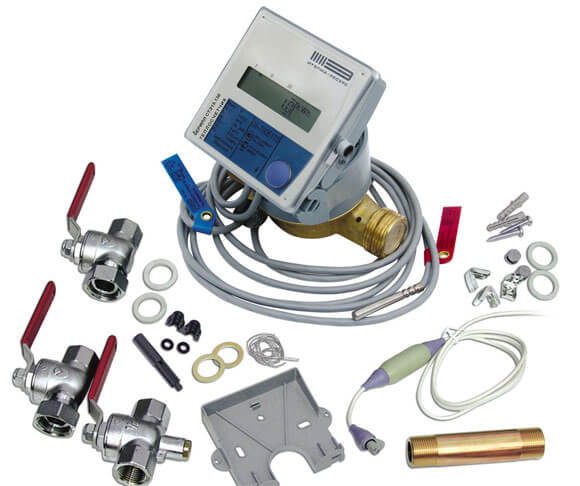
- house (industrial);
- apartment (individual).
As a heat carrier, water is usually used, heated to the desired temperature.
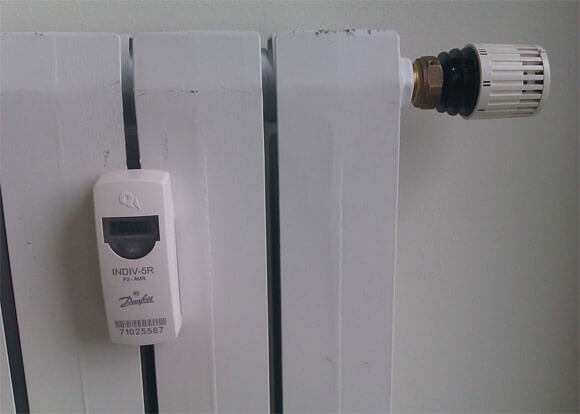
- heat calculator;
- hot water consumption meter.
House (industrial) heat meters
Household or industrial heat meters for heating are used for installation at production facilities and in multi-apartment buildings. To account for heat, one of three methods is used: electromagnetic, turbine or vortex. The main difference between industrial appliances and residential appliances is their size. The diameter of house meters ranges from 25 to 300 millimeters. The measurement range of the amount of heat carrier is about 0.6-2.5 m³/h.Mechanical heat meters
The mechanical (or tachometric) heat energy meters shown in the photo are simple units. Usually they are equipped with a heat meter and a rotary water meter. The principle of how this type of heating meter works is as follows: for the convenience and accuracy of measurement, the translational movement of the liquid coolant turns into rotational.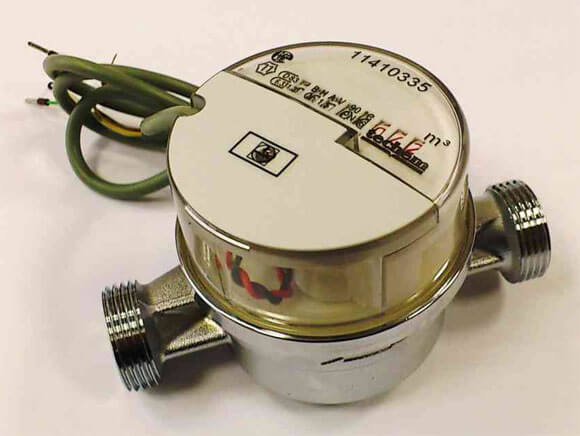
A mechanical (tachometric) meter is a very economical purchase, but the cost of filters should be added to its price. As a result, the kit will cost the consumer about 15% cheaper than other types of heat meters, but on condition that the pipeline diameter does not exceed 32 mm.
Mechanical devices have a significant drawback - they cannot be used when the coolant (water) has a high degree of hardness and if it contains particles of rust, scale or scale, because they clog filters and flow meters.
Ultrasonic heat meters
Manufacturers offer consumers a wide range of models of ultrasonic heat meters. True, the principle of operation for all of them is almost the same: two devices are installed on the pipe opposite each other - an emitter and a device that receives ultrasonic signals. The emitter sends a special signal through the coolant flow and after a while it is received by the receiver. The time interval between the emission and reception of a signal depends on the speed of movement of water through the pipeline. When the time is known, the coolant flow rate is calculated.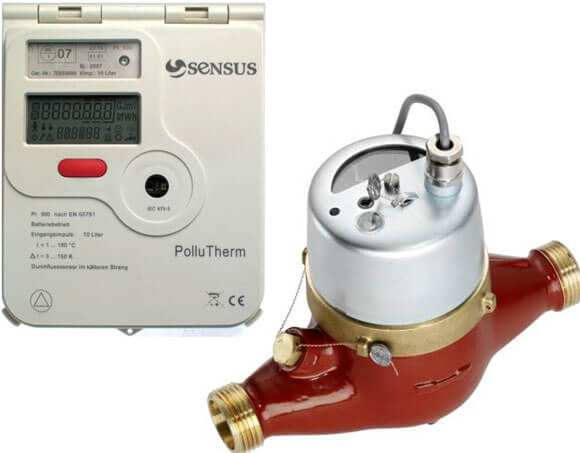
An ultrasonic heat meter, in addition to its main functions, can adjust the supply of thermal energy. These thermal energy meters are more accurate readings, they are more reliable and durable than tachometric devices.
Installation of heat energy meters
According to experts, the best solution to the question of where it is better to put a meter is to install a common house heat meter. Then all consumers living in the house will not have to pay for heat energy, which in fact was not supplied to the building. But the cost is big. True, if you divide it by the number of apartments, then it will be quite affordable.To install a common house heat energy meter, you will first need to hold a general meeting of residents, draw up a documented decision (draw up and sign a protocol) and submit an application to the management company with a request to connect the unit. After the heat meter is installed, a person from among the consumers will be required to be responsible for taking readings from the device in a timely manner and issuing receipts for each apartment.
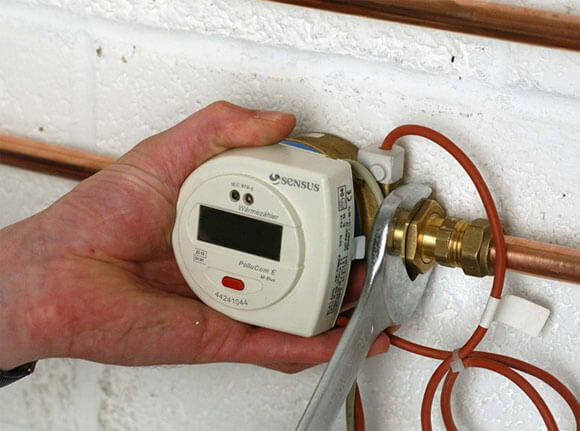
If not all residents of the house or entrance agree to the installation of a heat meter, then the owner of the apartment should think about how to significantly reduce the financial costs of individual heating of their own housing.
Installation of an individual heat meter
Before you install a heating meter in a separate apartment of a multi-storey building, you will need to perform a number of activities and actions, otherwise connecting the device will not be appropriate and legal.Step one . It is necessary to eliminate the existing sources of heat loss, including cracks in the windows, insufficiently insulated entrance doors, and freezing corners. Only after this, the installation of a heat meter will result in significant savings in money.
step two . The management company (ZHEK, HOA) must provide the owner of the apartment with technical conditions (TU) - they attribute the requirements that must be met in order to connect. Usually the text of the conditions takes up an A4 sheet. It certainly indicates information about the temperature and pressure of the coolant entering the pipeline of a particular house.
Step Three . Knowing these parameters, you can start buying a heat meter without fail in a company that works legally. When purchasing the device, you must require a sales receipt and cash receipt, a certificate confirming the quality, rules and instructions for use.
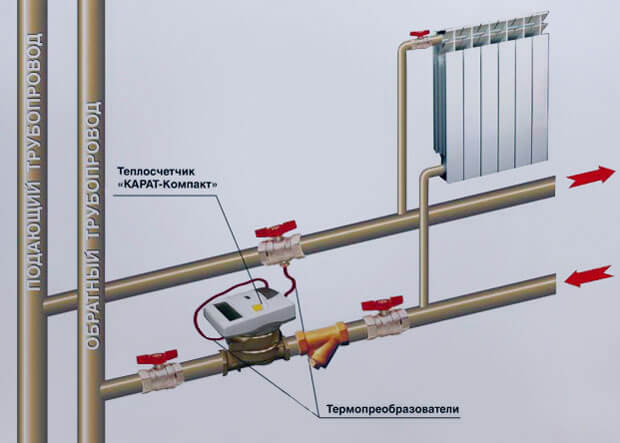
Step five . A measuring thermal device is being installed by employees of a licensed organization specializing in this type of service.
When choosing a company, it is advisable to pay attention to a number of nuances:
- for the availability of information about the organization in the Unified State Register of Legal Entities;
- for the presence of a package of necessary documentation, including certificates, certificates, permits of SROs;
- availability of qualified specialists;
- availability of special equipment;
- to perform a full list of installation works;
- availability of a free visit of a specialist to the client’s apartment in order to inspect communications;
- availability of warranties for the work performed.
To make life easier for yourself, the owner of the apartment has the right to order all of the above works in one place - in a company that deals with this type of service at a professional level, however, you will have to pay a considerable amount for this. If you have the desire and free time, you can prepare the installation documents yourself.
Checking heat meters
Usually, new appliances are sold with an initial check, which is carried out at the factory that manufactures them. The proof that the verification of heat meters has been carried out is the presence of a special sticker corresponding to the record, a special stamp, both on the devices and in the documents attached to them.During operation, verification of heating meters is carried out at the expense of apartment owners once every 4 years, for its implementation it is necessary to contact a number of organizations and institutions:
- to the branch of Rostest;
- to a company that has the appropriate authority to carry out the audit;
- to the service center of the manufacturer.
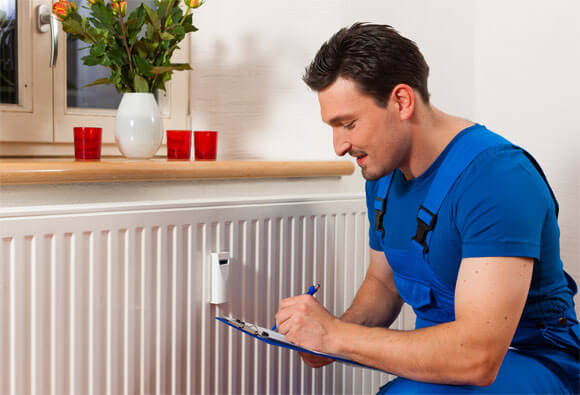
They independently take readings from the meter for heating in the same way as from the electric meter. In the receipt for payment, the difference in readings is indicated, multiplied by the established tariff and payment is made, for example, in one of the branches of Sberbank. The recipient of the payment is the heat supply organization.
Heat meters - installation advantages, detailed video:
Restrictions on installing a heat meter in an apartment
Many consumers are interested in whether they put meters for heating individually in each apartment? The fact is that in most domestic apartment buildings, when creating a heating system, vertical riser wiring is used, which prevents the installation of one apartment meter.In such a situation, there is only one solution - to put meters on radiators, but such a solution is difficult to implement for the following reasons:
- installing several heat appliances in one apartment will cost its owners a tidy sum, since each meter for a heating battery costs a lot of money;
- taking readings from each device is hampered by the fact that utility workers are not able to make monthly rounds of all the rooms in the apartments of the house in order to record data. When doing this work on your own, you can get confused in the numbers and make mistakes in the calculations;
- maintenance problems - several devices are much more difficult to control and verify their correct functioning;
- the meter for the heating radiator has poor accuracy, since the difference at its inlet and outlet is so small that the device is often unable to fix it.
In buildings built after 2000, a horizontal distribution of the heating system is used, so in such apartments it is enough to install one heat consumption meter, and distributors are not required.
As a result of the above measures, it is possible to significantly reduce the monthly payments for services provided by utilities through the installation of heat meters.
